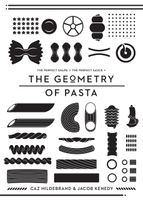Advertisement
Garganelli
By Caz Hildebrand and Jacob Kenedy
Published 2010

These thin ridged tubes, closely resemble that oft-unidentified tube in the neck end of a chicken – the oesophagus, which translates as garganel in Emilia-Romagna, hence the name garganelli. The shape is formed by wrapping small (roughly 4cm) squares of egg pasta diagonally around a wooden dowel, then rolling over a pettine del tessitore (weaver’s comb) or basket to give the signature ridges around the tube of pasta. Legend tells of a poor massaia near Ravenna (the heartland of this pasta) who, having rolled out the pasta and cut squares for making tortellini, discovered her cat had eaten all the filling. As her guests were at her door, she quickly rolled the pasta up and over a loom comb, likely to be found in the house of any Romagnola housewife back in the old days. Garganelli are made by no accident, however – they were traditionally boiled in a rich capon broth and served in brodo – today they are more often eaten asciutta, (literally, ‘dry’, meaning ‘in sauce’ as opposed to soup) especially in a creamy sauce of ham and peas.



